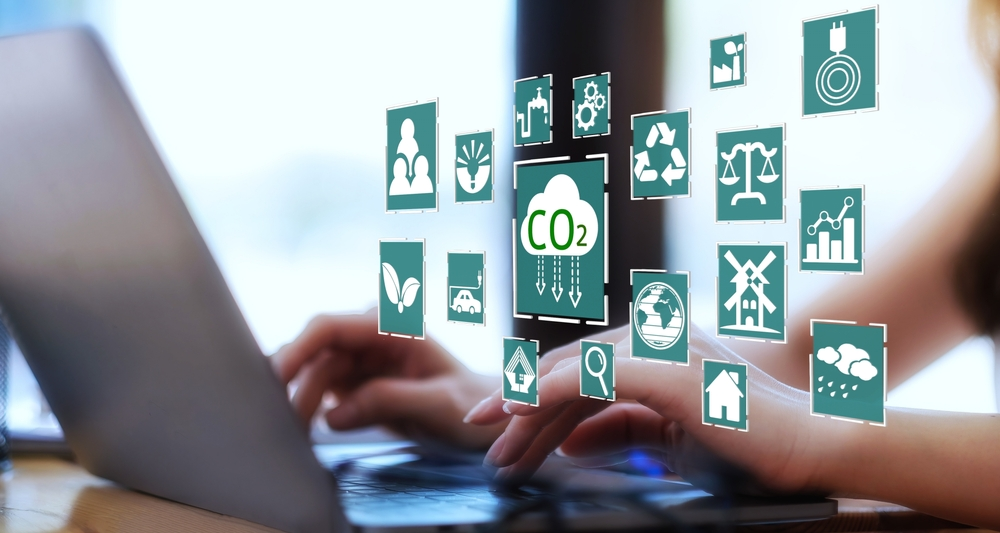
Sustainability isn’t just a buzzword: it’s an essential part of modern businesses. From the growing urgency with which everybody must act to stay within the 1.5°C target as laid out in the Paris Agreement to the customer demands to act in a socially responsible way, industries across the world must reconsider their practices.
The IT sector is no different. Technology significantly contributes to global carbon emissions and environmental degradation at every stage of its lifecycle, with the IT industry generating an estimated 350 to 400 megatons of carbon dioxide equivalent gases every year. That’s about half the emissions of aviation or shipping, or the equivalent of the total carbon emitted by the UK.
In this article, we’ll explore the main impacts of IT practices on the world around us, and consider solutions to overcome these challenges and embed sustainable practices within the industry.
The environmental impact of traditional IT practices
The extraction of raw materials threatens the planet
Manufacturing electronic devices necessitates the extraction of finite raw materials such as coltan, cobalt, and rare earth elements. Once gone, these cannot be replaced, meaning an overproduction of electronic devices now threatens the capabilities of future generations.
To make matters worse, these minerals and metals are often mined in environmentally sensitive areas, with their extraction causing deforestation, habitat destruction, and water pollution. There are also serious ethical concerns related to the labour practices in these areas; in some regions, mining operations exploit and disrupt local communities, leading to social unrest and human rights violations.
Silicon chips: more expensive than you realise
Almost all electronics, be it smartphones, TVs, or electric cars, need a silicon chip to function. But manufacturing these chips comes with its own climate bill. A chip fabrication plant can use millions of gallons of water a day while creating huge amounts of hazardous waste. This places undue stress on local water supplies and ecosystems, while the assembly of components and devices can generate significant carbon emissions.

The energy consumption of IT
Technology doesn’t just pose problems during its creation. Data centres, which host servers and IT infrastructure, consume vast amounts of energy for their operations, thanks to the use of powering servers, cooling systems, and other supporting equipment.
Meanwhile, end-user devices pose an even greater threat to the climate. Although charging our phones every night might not seem like it could cause global environmental degradation, all end-user devices such as desktop computers, laptops, and mobile devices consume energy during regular use and charging. In fact, end-user devices generate 1.5 to 2.0 times more carbon globally than data centres thanks to their widespread usage.
The cycle is getting faster – and it’s a dead end
Increased consumer demand combined with shorter product life cycles has led to a surge of overconsumption of tech. The continued demand for newer and better devices only intensifies the issues associated with the extraction of precious resources and the manufacturing, with the end product being used for less and less time. The sheer volume of electronic devices produced and discarded is staggering: smartphones are upgraded on average every two years, laptops four years, and printers five years.
But what happens to the old tech once the latest upgrade arrives? Precious little of it gets recycled. With a shocking 50 million tonnes of e-waste sent to landfill every year – a figure set to more than double to 110 million tonnes by 2050 – e-waste is the fastest growing solid waste stream in the world. Screens, mobile phones, and laptops account for almost ¼ of this discarded total, posing a serious threat to the environment and human health.
If e-waste is not recycled correctly – and much of it isn’t – it can release as many as 1000 different chemical substances into the environment, including harmful neurotoxicants such as lead, according to the UN.
What does a more sustainable IT model look like?
The current model is unsustainable.
Start at the beginning: green procurement
Clear and comprehensive sustainable procurement policies go some way to addressing the problems presented by the extraction, manufacturing, and shipping involved in creating new IT.
As a first step, IT companies should, where possible, opt for recyclable IT equipment, and prioritise suppliers who align with their sustainability goals through rigorous supplier assessment and selection evaluating adherence to environmental regulations, ethical labor practices, and recognized certifications such as ISO 14001 and ISO 26000. This deliberate selection process ensures that suppliers share the commitment to sustainability throughout the supply chain.
We all have a part to play in ensuring human rights standards are upheld within the supply chain. Engaging with industry groups, NGOs, and other organisations to share knowledge and gain insights can be a good way to litmus check the social responsibility of your suppliers, as can regular audits and monitoring mechanisms.
Increase the product life span of end-user devices
As you may already have guessed, the first step is to expand the life span of end-user devices. Doing so conserves precious resources and reduces the electronic waste sent to landfill.
Regular software updates and maintenance are vital to keep technology performing at its best for its longest. As an added bonus, users can enjoy the enhanced stability, security, and functionality that routine maintenance brings. While regular updates are best practice in any situation, security patches, bug fixes, and performance improvements take on a new importance for IT when we consider the environmental impact of every new laptop.
Speaking of laptops – where possible, IT should recommend the use of desktops. Given the portable nature of laptops, they’re much more subject to drops, dust, and spills (particularly when taken home to children!) than the sturdy desktop. In situations where it’s not possible to move the majority of the workforce to desktops, IT professionals should provide tips for proper handling and care for laptops, including regular cleaning and the use of protective cases.

Finally, having the right asset management tools in place can extend the lifespan of every device by offering insights into the health, usage, and performance of electronic assets. Proactive monitoring means IT professionals can identify and address issues before they lead to device failure while strategically planning for upgrades and replacements. As a result of optimising device allocation, usage, and upgrade schedules, asset management can significantly extend the lifespan of electronic devices, reducing the need for premature replacements and minimising the amount of tech sent to landfill each year.
Of course, laptops, desktops, and the like aren’t inexpensive. Making each device last longer isn’t only good for the planet but also positively impacts on the bottom line, making it an easy sell for even the most sceptical of stakeholders.
A move to the cloud
Finally, let’s shift our focus away from end-user devices and towards infrastructure. Optimising data centres through structural improvements and efficient layouts can be a good step to reducing carbon emissions, particularly for businesses who must rely on data centres by necessity.
For those with the option, migrating workloads to the cloud can significantly cut emissions – by more than 55% in some cases, resulting in the avoidance of emitting about 40 megatons of carbon dioxide equivalent gases worldwide (that’s the equivalent emissions of Switzerland!).
Conclusion
From energy-hungry data centres to the mounting electronic waste, the hidden costs of conventional IT are far-reaching, affecting both our planet and the communities involved in the production and disposal of electronic devices.
The environmental footprint of traditional IT extends beyond carbon emissions, encompassing resource depletion, water usage, and the often-overlooked ethical considerations in the sourcing of raw materials. It’s vital that IT consulting firms, businesses, and professionals alike come together to take proactive steps toward more sustainable practices.
The road to sustainable IT involves a paradigm shift, embracing energy-efficient technologies, responsible e-waste management, ethical sourcing, and a commitment to reducing the overall impact of IT operations. The way forward is a holistic approach to technology—one that values environmental responsibility, social ethics, and long-term viability— that will not only position businesses as leaders in their respective industries but also play a crucial role in shaping a more sustainable and equitable world.
